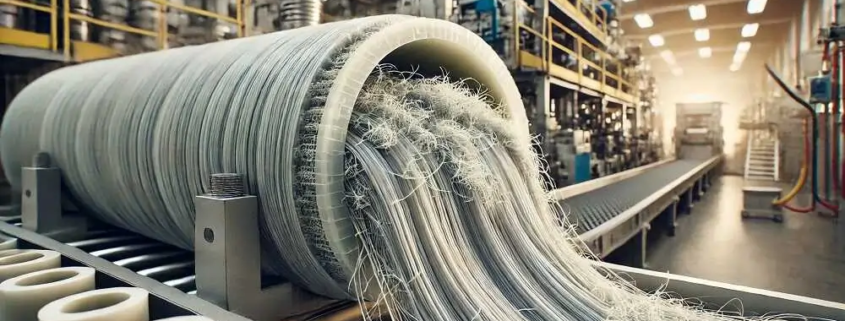Long Fiber Thermoplastics Market is projected to grow at a CAGR of 8.47%
The long fiber thermoplastics market is expected to grow at a CAGR of 8.47% during the forecasted period (2024-2029).
This market is expected to grow because of the increasing demand from the automotive industry for long-fiber thermoplastics. Furthermore, long fiber thermoplastics are superior to metal and conventional thermoplastics in end-use industries due to their many advantages including high strength, durability, toughness, fatigue endurance and lightweight nature. Growing Awareness about fiber reinforced thermoplastic resins with qualities like toughness, flexibility, durability and thermal resistance is expected to increase demand for various long fiber thermoplastic varieties in future years.
The growth in the car businesses will probably sustain a larger market share of long fibre thermoplastics since their demand is on the rise. In addition, when used within sectors like these, long fiber thermoplastics have more advantages than metals and traditional thermoplastics. Some of them include high strength, toughness, low density, fatigue resistance and many other factors that make it hard enough for those kinds of jobs. Over the next few years, increased demand for fiber reinforced thermoplastic resins’ properties such as toughness, flexibility durability and heat resistance will serve to increase sales of different types of long-fiber thermoplastics.
The long fiber thermoplastics market, by resin type, is divided into four types- Polypropylene, polyamide, polybutylene terephthalate, and others. Forecasted growth for the polypropylene type with the fastest growth is expected in the homopolymer segment. A basic type of polypropylene resin is known to be polypropylene homopolymer, which has one monomer of propylene joined together in a straight line. It grows faster than any other type of polypropylene thus holding the largest share in the world market. The rise in demand for homopolymer polypropylene in end-user applications such as packaging, medical, automotive, electrical and electronics, as well as building and construction works contributes towards this development trend. Among them are some advantages that can be derived from non-covalently bonded polypropylene homopolymers: These offer resistance to staining caused by various types of chemicals like acid or alkalies alongside lower moisture absorption rates and better tensile strength.
The long fiber thermoplastics market, by end-user industry, is divided into six types- Automotive, aerospace, electrical and electronics, buildings & constructions, sporting equipment, and others. For LFTs the use of metal in structural and semi-structural parts, for instance, instrument panels, door modules, front-end modules, and under body shields is often required since they provide exceptional weight optimization and fuel savings whenever they are used. The increased usage of LFTs is driven by rising demand for small lightweight narrowly framed cars and commercial vehicles. This is because LFTs enable strong but lightweight component designs. There has also been a rising interest especially in Europe in recovering recyclable materials from automobile structures prompting mono-material use of LFTs such as LGFRP. On account of increasing need for long-lasting materials that meet industry standards as well as reduced environmental pollution from industrial production processes the consumption of LFTs will increase in the near future.
During the projected timeframe, it is anticipated that the market for long fiber thermoplastics will experience remarkable growth within Asia Pacific. It is projected that long-fiber thermoplastics will have their most significant usage in the Asia-Pacific region during this forecast period because of its widening opportunities. In terms of competition, China, Japan and South Korea are all players that drive up the demand for LFTs within the region. In this sense, China appears to be poised to show the biggest regional increases. This could be attributed to a rising market for electric vehicles and the consequent need for lightweight automotive parts. Additionally, there is an expanding middle class in the region whose incomes are also on the rise thus benefitting automobile industry as well as other industries associated with it. As such, it leaves room for more durable household appliances and consumer goods made from long fiber thermoplastics.
The research includes several key players from the long fiber thermoplastics market, such as Asahi Kasei Corporation, BASF SE, Celanese Corporation, Daicel Corporation, GS Caltex Corporation, LANXESS, Mitsui Chemicals Inc., Avient Corporation, Polygram Group, SABIC, and SGL Carbon.
View a sample of the report or purchase the complete study at https://www.knowledge-sourcing.com/report/long-fiber-thermoplastics-market
The analytics report categorizes the long-fiber thermoplastics market using the following criteria:
Segmentation:
- By Resin Type
- Polypropylene
- Polyamide
- Polybutylene Terephthalate
- Others
- By End-User Industry
- Automotive
- Aerospace
- Electrical and Electronics
- Buildings & Constructions
- Sporting Equipment
- Others
- By Geography
- North America
- USA
- Canada
- Mexico
- South America
- Brazil
- Argentina
- Others
- Europe
- United Kingdom
- Germany
- France
- Italy
- Spain
- Rest of Europe
- Middle East and Africa
- Saudi Arabia
- Saudi Arabia
- United Arab Emirates
- Rest of Middle East and Africa
- Asia-Pacific
- China
- India
- Japan
- South Korea
- Taiwan
- Thailand
- Indonesia
- Rest of Asia-Pacific
- North America
- Short Fiber Thermoplastic Composites Market Size
- Global Thermoplastic Resin Market Report
- Fiber Reinforced Polymer (FRP) Composites Market Share



